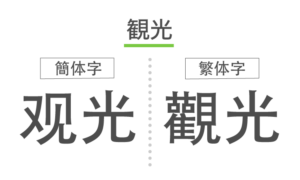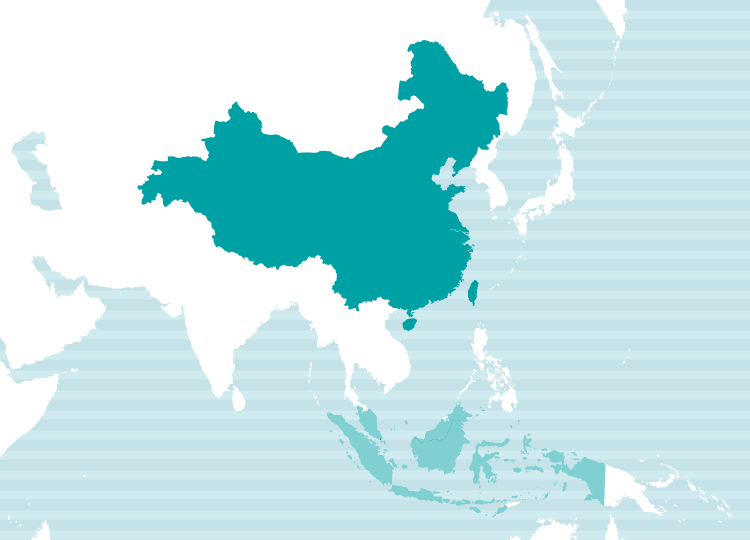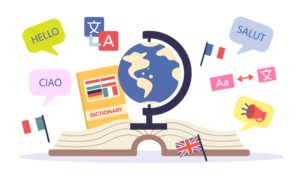Professional Chinese Translation Services by NAIway
At NAIway Translation Service, our experienced translators, specializing in various fields, provide high-quality Japanese ⇔ Chinese (Simplified & Traditional), English ⇔ Chinese translations, as well as Chinese proofreading services.
Our Chinese translations undergo a rigorous quality control process—first translated by skilled linguists, then carefully reviewed by proofreaders and quality checkers before delivery. Our translators are based both in China and Japan, ensuring deep cultural and linguistic expertise. We also have professionals capable of translating directly from English to Chinese.
Many of our clients have praised NAIway’s Chinese translation and proofreading services for being both high-quality and cost-effective. Our service goes beyond simple translation—we include thorough quality control and a post-delivery inspection period, ensuring exceptional value for the price. Thanks to our commitment to excellence, a growing number of satisfied clients continue to use our services as repeat customers.
For first-time users, NAIway offers a trial translation. Feel free to try our service and experience the quality firsthand!

For more details, please feel free to contact us.
About Simplified and Traditional Chinese
Simplified vs. Traditional Chinese
Chinese is written in two different scripts: Simplified Chinese and Traditional Chinese.
- Simplified Chinese is a simplified character system predominantly used in mainland China.
- Traditional Chinese retains the original, more complex character forms and is primarily used in Hong Kong, Macau, and Taiwan.
Traditional Chinese has two variations:
- Taiwan Traditional Chinese (used in Taiwan)
- Hong Kong Traditional Chinese (used in Hong Kong)
Since there are differences in vocabulary and writing conventions between these two, we ensure proper localization in our translations.
When requesting a Chinese translation, please specify which script you need. If you're unsure, let us know the intended purpose and target region, and we’ll recommend the most appropriate option.
Simply converting characters between Simplified and Traditional Chinese may result in inaccurate translations, as differences in vocabulary and expressions are not automatically accounted for. If you need a properly localized conversion, we recommend requesting a new translation.

Chinese Translation Rates
Below are NAIway’s standard translation rates.
Our regular translation fees cover all of the following services, so you can rely on us with confidence.
Translation
+
Native-Level Quality Check
+
After-Support※
※ As part of our after-support, we handle revisions and inquiries within the post-delivery verification period (typically one week).
(Please note that changes or additions to the original document are not included.)
Japanese to Chinese Translation

From 12.65 JPY per character
Chinese to Japanese Translation

From 13.75 JPY per character
- The actual cost will be estimated based on the content and volume of the document. Please send us the document when requesting a quote.
- Minimum Charge Policy. Depending on the character/word count and other conditions, we have a two-tier minimum charge system of 5,500 Japanese Yen or 11,000 Japanese Yen (tax included). This ensures coverage of the essential costs involved in translation coordination and quality assurance.

For more details, please feel free to contact us.
Key Points for Chinese Translation
Key Considerations for Chinese Translation
Unlike Japanese, Chinese does not have a katakana script for loanwords and foreign names. Therefore, special attention is required when translating Japanese text that includes katakana words.
In such cases, translators and quality controllers must determine the most appropriate approach:
- Translating the word into Chinese characters while preserving its meaning
- Using the English equivalent if applicable
At NAIway Translation Services, our translators and quality managers handle this process with great care. However, in some cases, we may reach out to you for confirmation to ensure the best translation.
If any uncertainties arise during the translation process, we will contact you for clarification. Alternatively, we may include translator and quality reviewer comments in the delivered document, requesting your review during the post-delivery verification period (typically one week).
If you have any further questions or require adjustments, please feel free to reach out during this verification period.
Important Considerations for Chinese Translation Requests: Spring Festival & National Day
Important Considerations for Chinese Translation Requests: Spring Festival & National Day
When requesting Chinese translation services, please be aware of major Chinese holidays such as Spring Festival (Lunar New Year, late January–early February) and National Day (late September–early October).
During these periods, many Chinese translators take time off, resulting in limited availability. Additionally, these holidays often coincide with a surge in tourism, leading to increased demand for Chinese translation services. As a result, turnaround times may be longer than usual.
To ensure timely delivery, we highly recommend submitting your requests as early as possible.

NAIway's Quality Assurance System
At NAIway Translation Service, we believe that quality management is our top priority as a professional translation company. To ensure the highest standards, we have developed our own Quality Assurance System (QAS) and implement strict quality control measures.
For high-quality Japanese-Chinese and Chinese-Japanese translations, every document undergoes a two-step review process: after the initial translation, a second translator conducts a thorough quality check.
We meticulously review each character and sentence, ensuring logical flow, terminology consistency, and appropriate expressions to deliver a refined translation tailored to your needs.

Multilingual Translation Support
At NAIway, we offer multilingual translation services. In addition to Chinese, you can request translations for English, Korean, Thai, and more—all simultaneously.
This eliminates the hassle of working with multiple translation providers for different languages. And of course, we ensure high-quality translations in every language we offer.

For more details, please feel free to contact us.
Introduction to Our Chinese Translators
Here are some of the translators currently working with or registered at NAIway.
What is Chinese?
What is Chinese?
Chinese is spoken by over 1.4 billion people worldwide, making it the most widely spoken native language. Naturally, this makes Chinese translation highly in demand.
However, Chinese is not a single, uniform language. Due to China's vast territory and multi-ethnic population, there are numerous dialects, many of which differ significantly—almost like separate languages. The major ones include Mandarin (Putonghua), Cantonese, Shanghainese, and Taiwanese, each with distinct pronunciation and vocabulary.
The official standard language is Putonghua, which is based on the Beijing dialect of Northern Mandarin. While it is sometimes referred to as "Mandarin" or even "Beijing dialect," it is distinct from the local Beijing dialect itself.
In southern China, including Hong Kong, Macau, and the Guangzhou region, Cantonese is widely spoken. Cantonese is an official language in Hong Kong, where it is used in TV, movies, and newspapers—many people recognize it from Kung Fu films.
In Taiwan, the official language is Taiwanese Mandarin (Taiwan Huayu), which is derived from Mandarin but has developed uniquely over time. In southern Taiwan, Taiwanese (Hokkien) is still commonly spoken. Unlike Taiwanese Mandarin, Taiwanese (Hokkien) originates from the Minnan (Hokkien) dialect of southern Fujian province and is a completely different language.
Primary Regions of Use

Language Family: Sino-Tibetan, Sinitic Branch
Spoken Regions: China, Taiwan, Singapore, Indonesia, Malaysia, and more
Chinese Characters
Chinese uses Han characters (Hanzi). The characters differ between Simplified Chinese and Traditional Chinese.
In Simplified Chinese, "Nice weather, isn’t it?" is written as follows:
天气真好啊
Tiānqì zhēn hǎo ā.
In Traditional Chinese, "Nice weather, isn’t it?" is written as follows:
天氣真好啊
Tiānqì zhēn hǎo ā.
What is Simplified Chinese?
Simplified Chinese is a simplified character system introduced in China’s 1950s "Character Reform" policy to make traditional Chinese characters easier to read and write. It is used in Putonghua (Standard Chinese).
〔Regions where Simplified Chinese is used〕
Mainland China, Singapore, Indonesia, Malaysia, and more.
What is Traditional Chinese?
In Taiwan, Hong Kong, and Macau, Traditional Chinese characters, which have more complex strokes, are still in use, as they were before the "character reform." Even within the Cantonese-speaking world, Hong Kong and Macau continue to use Traditional Chinese, whereas Guangdong Province has largely adopted Simplified Chinese.
Additionally, there are differences in the characters and expressions used between Taiwanese Traditional Chinese and Hong Kong Traditional Chinese.
〔Regions where Traditional Chinese is used〕
Taiwan, Hong Kong, Macau, and more.
Differences in Meaning Compared to Japanese
Some Chinese words look identical to their Japanese counterparts but have completely different meanings.
For example, "手紙" (shǒuzhǐ)(Japanese meaning "Letter") in Chinese refers to toilet paper, whereas the Japanese word for a letter is "信" (xìn)(Japanese meaning "Trust") in Chinese. Similarly, "愛人" (àirén)(Japanese meaning " a lover or mistress") means "husband" or "wife" in Chinese, while in Japanese, it implies a lover or mistress. "汽車" (qìchē)(Japanese meaning "Train") refers to a car in Chinese, not a train. "暗算" (àn suàn)(Japanese meaning "Mental Arithmetic") means to scheme or plot, and "告訴" (gàosù)(Japanese meaning "Accusation") simply means to inform—all of which could easily cause misunderstandings.
Another interesting example is "工作人員" (gōngzuò rényuán)(Japanese meaning "Spy") , which means "staff" or "employees" in Chinese. However, due to its portrayal in Japanese media, some people in Japan associate it with spies!
Chinese Dialects
Chinese is the most spoken language in the world, but due to China’s vast territory and diverse ethnic groups, numerous regional dialects exist. Even from commonly heard names alone, we recognize varieties such as Mandarin, Cantonese, Shanghainese, Nanjing dialect, and Taiwanese Hokkien.
Chinese dialects are generally classified into seven major groups: Mandarin (北方), Wu (呉), Yue (粤), Min (閩), Xiang (湘), Gan (贛), and Hakka (客家). Among them, Mandarin (北方) includes the Beijing dialect, which formed the basis of Putonghua (Standard Chinese)—often referred to as "Mandarin".
For example, Yue (粤) includes Cantonese, Wu (呉) includes Shanghainese, and Min (閩) includes Taiwanese Hokkien.
- Major Chinese Dialect Groups and Their Regions
- Mandarin (北方, Běifāng): Beijing, Tianjin, Northeastern, Xi’an, Chengdu, Nanjing, Yangzhou dialects, etc.
Spoken in Northeast China, North China, Southwest China, and the Jianghuai region. - Wu (呉, Wú): Shanghainese, Suzhou dialect, etc.
Spoken in Shanghai, Zhejiang Province, and southern Jiangsu Province. - Yue (粤, Yuè): Cantonese
Spoken in Hong Kong, Macau, and Guangzhou. - Min (閩, Mǐn): Taiwanese Hokkien, Southern Min, Fujian dialects, etc.
Spoken in Fujian Province, eastern and southwestern Guangdong Province, Hainan Province, southern Zhejiang Province, and Taiwan. - Xiang (湘, Xiāng): Changsha dialect, etc.
Spoken in parts of Hunan Province, Guangdong Province, northern Guangxi Zhuang Autonomous Region, and parts of Sichuan Province. - Hakka (客家, Kèjiā): Hakka dialects
- Gan (贛, Gàn): Nanchang dialect, etc.
Dialects and Television Broadcasting
One of the best examples of dialect differences in Chinese is television broadcasting. Hong Kong, famous for its kung fu movies, often produces films and dramas in Cantonese. However, within mainland China, these productions are typically dubbed or subtitled in Mandarin (Putonghua) for wider accessibility.
Taiwanese Hokkien originates from the language of migrants from Fujian Province across the sea. Additionally, due to Taiwan’s history under Japanese rule, some vocabulary in Taiwanese has been influenced by Japanese.


